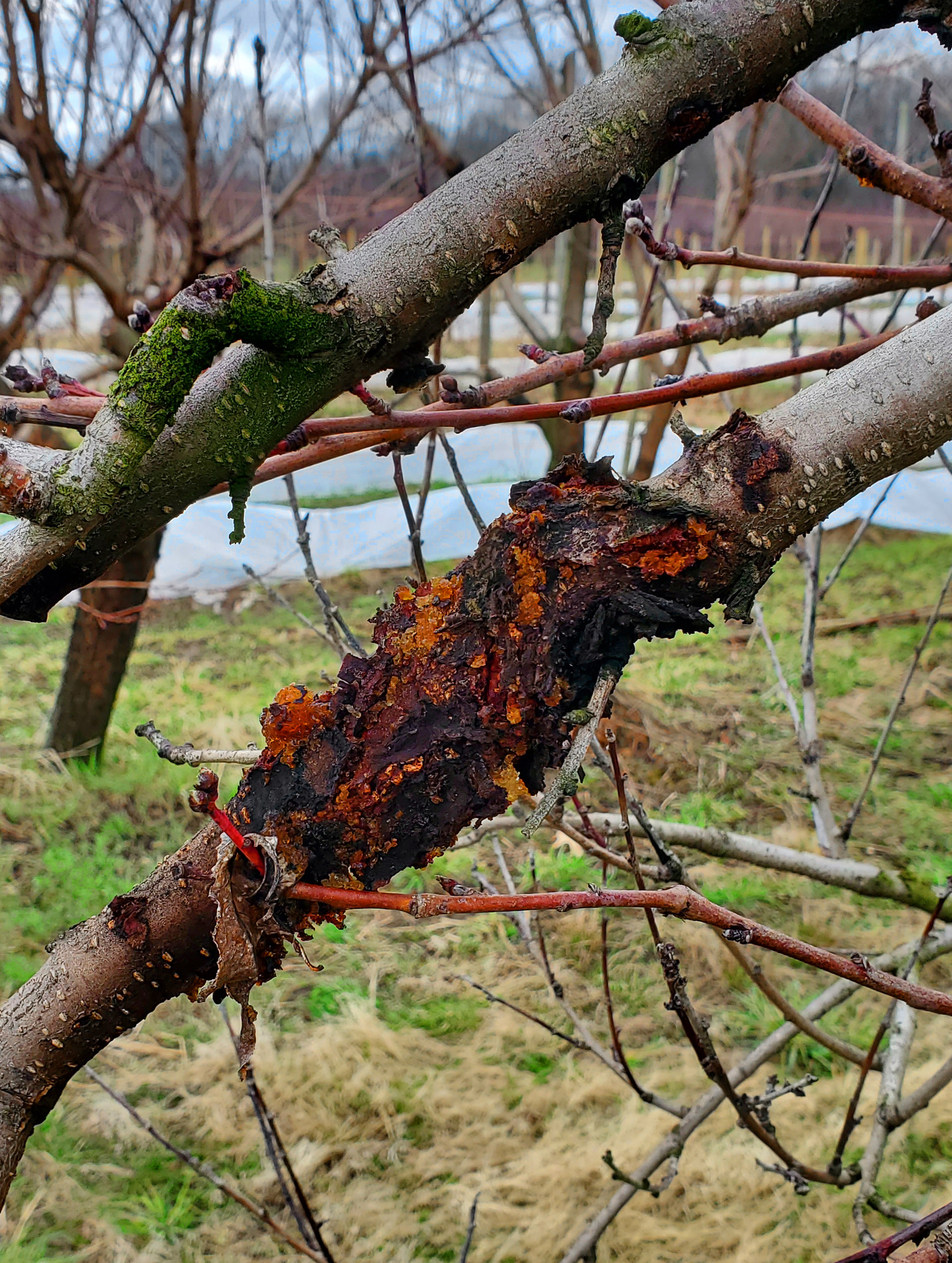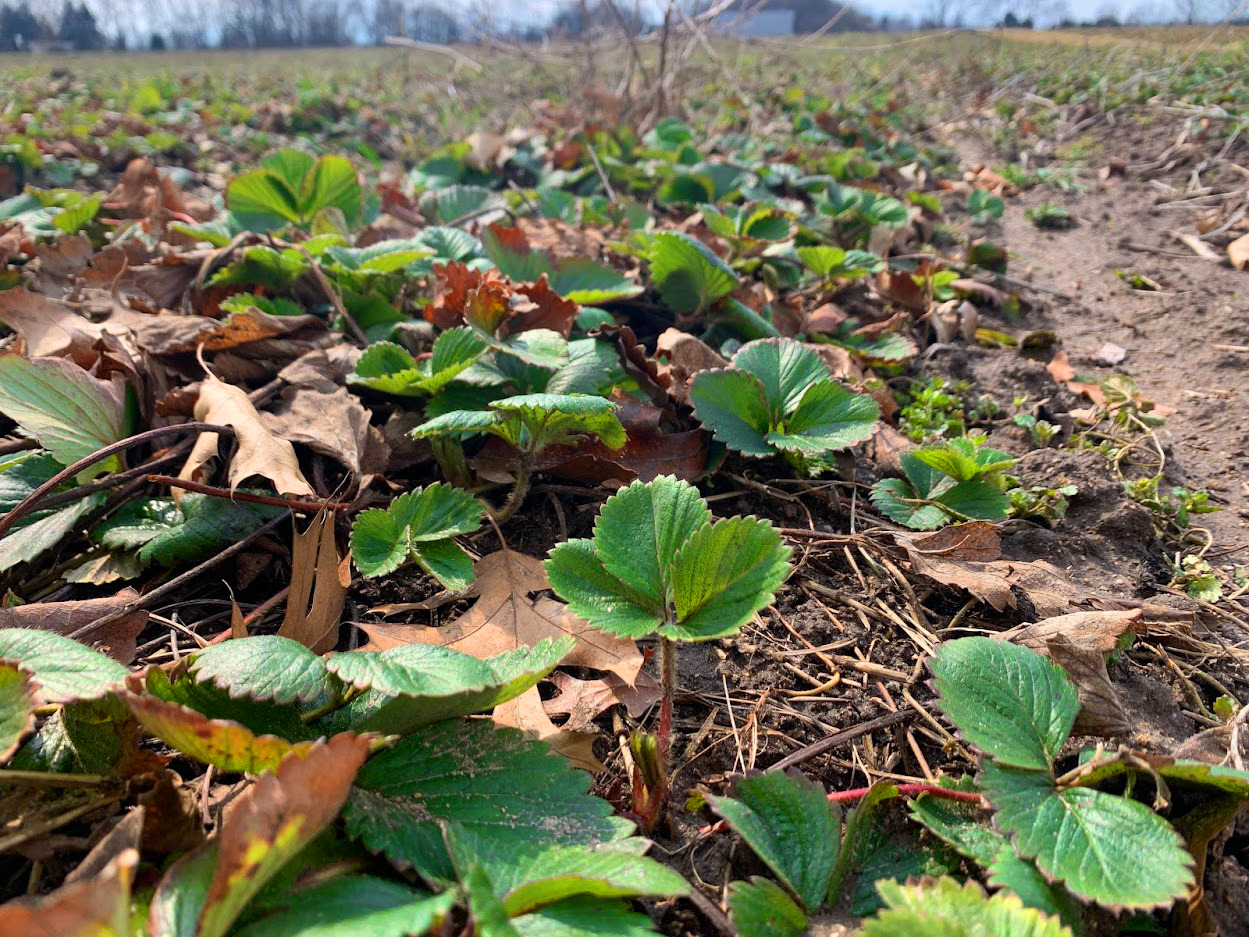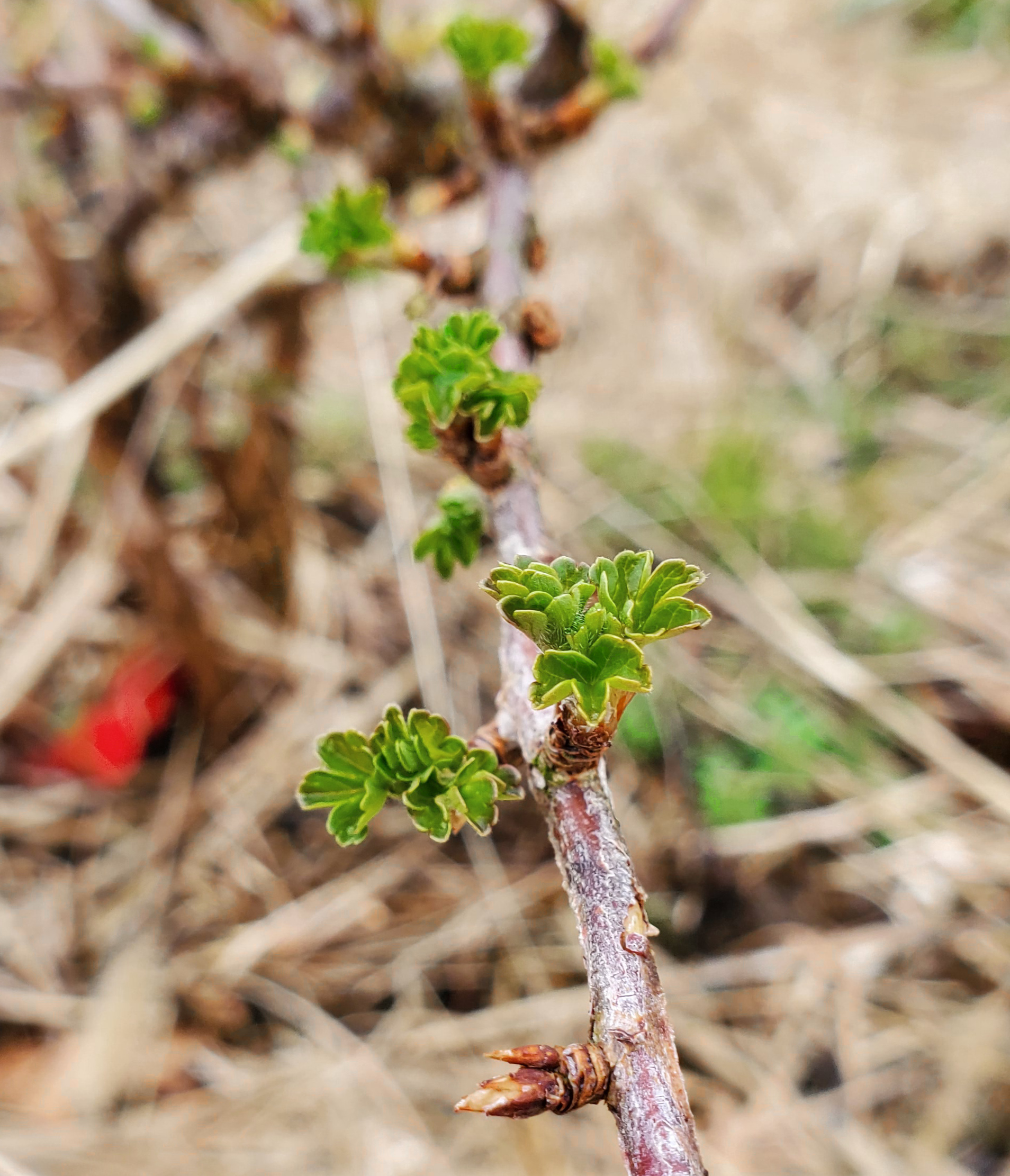Southwest Michigan fruit update – April 5, 2022
Most crops have continued development despite last week’s cool weather.

March weather
Temperatures were variable for most of March. Much of the region has already seen a few days with high temperatures near 70 degrees Fahrenheit. Several locations also reported lows between 10 and 15 F late on March 12 and March 27. At that time, most fruit crops would need to see temperatures near 0 for significant damage.
Recent weather
Last week started cold with high temperatures in the 30s and lows in the teens. Wednesday and Thursday saw a warmup with highs in the upper 50s on both days. By the weekend, high temperatures were back to the 40s.
Rain accompanied the warm temperatures last week. Wednesday was the wettest day. Most areas saw 0.5-1 inch of rain. The rain continued into the weekend then returned on Monday. In the past week, the region saw 1-2 inches of rain.
The forecast for the coming week will be much the same as last week. The first part of the week will have high temperatures in the mid-50s and lows in the mid- to upper 30s for much of the region. The high temperatures will then drop about 10 degrees by the end of the week to the 40s. Lows over the weekend will be near 30 F. Rain is predicted most days, with Wednesday being the most widespread precipitation.
Over the past week, we collected 13 growing degree days (GDD) base 42, 4 GDD base 50.
|
Southwest Michigan GDD summary from March 1 – April 4, 2022 | |||
|---|---|---|---|
|
Station |
GDD 42 F |
GDD 45 F |
GDD 50 F |
|
Benton Harbor (SWMREC) |
108 |
74 |
40 |
|
Lawton (Lawton) |
103 |
75 |
42 |
|
Fennville (TNRC) |
80 |
56 |
28 |
|
Average for the SW region |
99 |
70 |
39 |
|
Average last week |
86 |
62 |
35 |
The medium range forecast for the first half of April is for cooler than average weather, and lower than average chances of rain. Longer range forecasts fare for warmer than average temperatures through the rest of spring, and a return to average or above average chances of precipitation.
Tree fruit
Despite the recent cool conditions over the past week, trees have continued development. Only minor impacts are expected from winter temperature lows on Jan. 28 and Feb. 13 when temperatures reached down to 1 to -7 F in some sites. Vole damage has been significant on the base of trees in some apple sites, typically those with poorer weed control providing cover.
Growers continue to make good progress pruning. Check blocks for evidence of San Jose scale on branches to determine the need for oil sprays. The fungicide captan is apparently in short supply now. Ziram is fairly similar to captan in the spectrum of diseases controlled but washes off easier.
Apricots buds are slightly swollen.
Peach and nectarine fruit buds are swelling, especially for many of the showy bloom varieties that tend to develop earlier. If not already done, peach and nectarine should be protected against peach leaf curl infections. Infections require 10-plus hours of wetting with temperatures in the range of 46 to 55 F. The wetting period starting on March 27 was sufficient for peach leaf curl infection. Wetting events since then have generally been too cold. Treatment now can help suppress additional infections when these weather conditions occur even past bud swell. Low levels of copper also suppress bacterial spot populations.
In cherries, bud swelling of both sweet and tart cherries are obvious. Some varieties of sweet cherries are at side green. Copper sprays can be safely applied to cherries. Copper applications may reduce bacterial canker in cherries.

In plums, Japanese and European fruit buds continue to swell. Prune out black knot and dispose of the knots by burning or removing them from the orchard. Sanitation is an important step in managing this disease. Fungicide control generally starts at green cluster. Most varieties of European plum are more susceptible than Japanese plum to this disease.

Apple early varieties Zestar, McIntosh and Jonathan are showing green tissue. Scab sprays are needed as trap catches are showing that the fungal pathogen ascospores are being released in rains. Copper sprays can provide early scab control and fire blight suppression. Copper fungicides are less persistent than mancozeb and captan in rains. Protectants are preferred over systemic fungicides at this time of year for scab control to reduce the number of systemic fungicide applications and thereby slow the development of resistance.
Mancozeb fungicides are compatible with delayed dormant oil sprays, which may be needed in sites battling scale. Oil sprays have become more important with the loss of chlorpyrifos. Although fire blight has not been severe in southwest Michigan in recent years, this could quickly change with the right weather conditions. MSU continues to monitor spread of streptomycin resistant fire blight westward into Berrien and Allegan counties.
Alert MSU Extension fruit educators if fire blight symptoms show in your orchard. Apogee application has become an important tool to help suppress fire blight, especially in young susceptible apple varieties.
Pear buds are at bud burst and require protection against scab. Be prepared for fire blight management at bloom.
Small fruit
Grapes show no movement.
Blueberry flower buds appear swollen, with some separation in early varieties. Leaf buds are starting to swell in the early varieties but show no movement in most fields. Growers still have time to apply copper, Sulforix or lime sulfur products to suppress early season diseases.
Strawberries have greened up, and new leaves are starting to emerge from the crown. Overwintering mulches should be removed and raked between the rows. Some growers are putting out floating row covers. Growers are looking at early season herbicides to control overwintering weeds. When selecting an herbicide, check the preharvest interval (PHI).

Brambles show some movement with swollen buds. New canes are starting to be seen in some fall bearing raspberry fields. Dormant pruning should be completed soon. In summer bearing raspberries, last year’s primocanes should be headed (cut back) to the desired height and any remaining floricanes from last year should be removed. Fall bearing raspberries should be cut or mowed to the ground soon. Lime sulfur treatments for anthracnose can still be applied.
Currant and gooseberry leaf buds are starting to open.

Upcoming meetings
Our regular Southwest Michigan Monday Fruit IPM Updates will be moving to a hybrid format. The meetings will be held in person with virtual attending also available online. Our first meeting is Monday, April 11, at 5:30 p.m. You need to register to receive the Zoom link and password for these meetings. The webinars are free and two pesticide applicator credits are available for each meeting.
Related articles
- Welcome Cheyenne Sloan, new blueberry and small fruit educator
- Southwest Michigan fruit update – 2021 review
- Freeze damage depends on tree fruit stage of development
- 2013 bloom dates for southwest Michigan tree fruit crops
- Using Enviro-weather’s regional overnight temperature report during cold events
- Treat peach leaf curl now
- Managing bacterial canker in sweet cherries: What are the options?
- Early insect control with horticultural oils
- Dormant oil for tree fruit pest management in 2015
- Scouting and management of mummy berry in blueberries
This work is supported by the Crop Protection and Pest Management Program [grant no 2021-70006-35450] from the USDA National Institute of Food and Agriculture.



 Print
Print Email
Email




